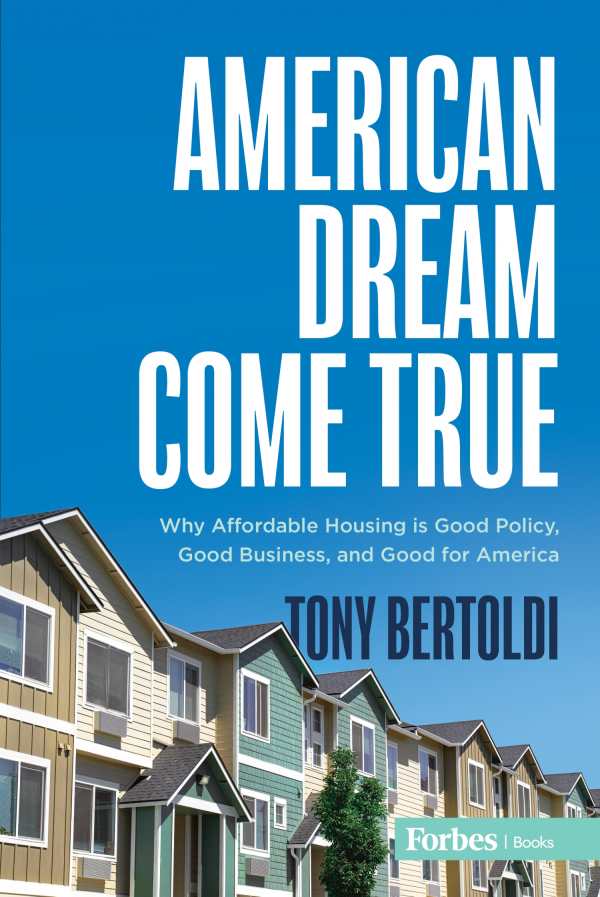American Dream Come True
Why Affordable Housing Is Good Policy, Good Business, and Good for America
Promising positive returns for all, American Dream Come True is a visionary book with a workable plan to make the US housing market more affordable.
Part educational, part aspirational, Tony Bertoldi’s political science text American Dream Come True suggests a bipartisan, impact-oriented solution to the US’s affordable housing crisis.
Ask any hardworking individual to describe their vision of the American dream, the book says, and chances are it would involve a house they could call home. But with inflation on the rise, massive discrepancies between rates and wages, and the overarching scarcity of affordable housing, it also suggests that the contemporary economic climate has rendered this dream a delusion for many working people.
The book’s plan of action slants toward the business side of social well-being. It debunks myths and misconceptions about affordable housing, breaks down the Low-Income Housing Tax Credit (LIHTC) program, and seeks to persuade all Americans—regardless of their income or political partisanship—to care about this debilitating social issue.
Bertoldi, who works as a “matchmaker in the syndication process” (acting as a conduit between private enterprises and the state agencies that allocate LIHTC subsidies) enlivens the book with anecdotes regarding the developers who go on to build the properties and the corporate investors who utilize the government credits to offset their tax liabilities. However, while his industry expertise builds credibility, the book’s several pages of glowing commendations from industry colleagues strike a tedious note.
Further, the book’s sources slant toward the home team, with the inclusion of contextual and expository information from government agencies and popular sources in the field of economics and finance work coming in second, though further legitimizing the book’s proposal. The wealth of information captured within the book evinces robust compassionate-capitalist dreaming. But the most impactful moments in the book occur as its focus shifts away from selling private businesses on a modern vision of social welfare and instead revisits the mid-twentieth century—the golden age of the American dream—to show how the pathway to homeownership shifted to exclude many working Americans. As a house is not just a roof over one’s head, but a home that yields stability, American Dream Come True compels citizens to exercise solidarity around the issue and to support its proposed plan of action to combat the affordable housing crisis in the US.
American Dream Come True is a visionary social science book that lays out a new pathway toward homeownership for working Americans, urging both the American public and private businesses to join in on the effort.
Reviewed by
Xenia Dunford
Disclosure: This article is not an endorsement, but a review. The publisher of this book provided free copies of the book and paid a small fee to have their book reviewed by a professional reviewer. Foreword Reviews and Clarion Reviews make no guarantee that the publisher will receive a positive review. Foreword Magazine, Inc. is disclosing this in accordance with the Federal Trade Commission’s 16 CFR, Part 255.

